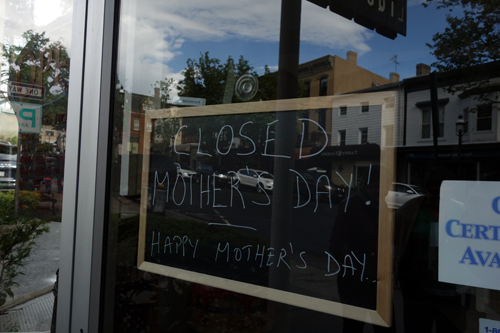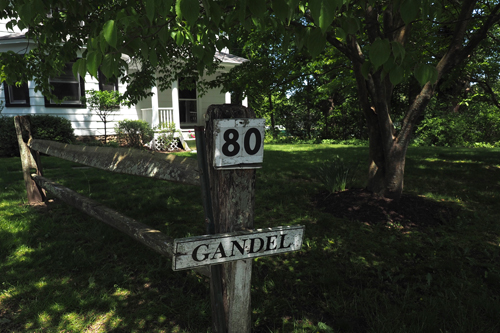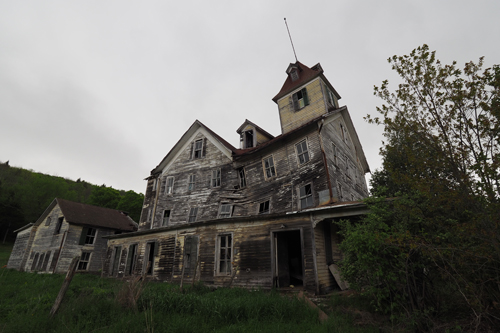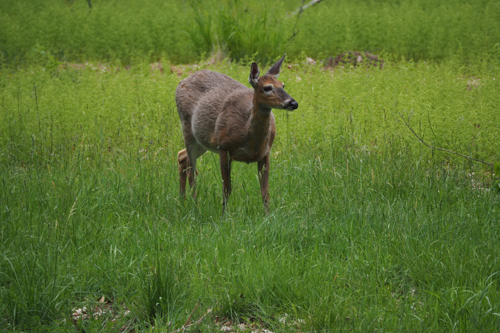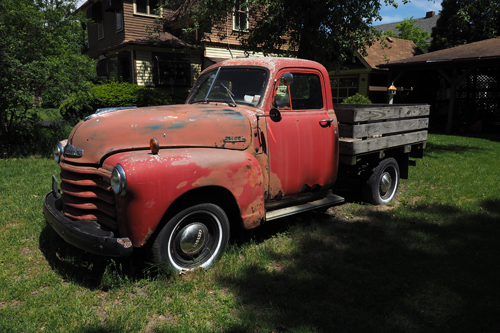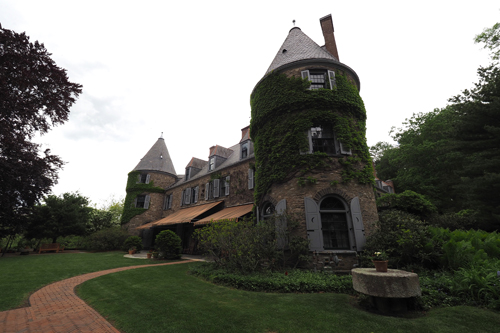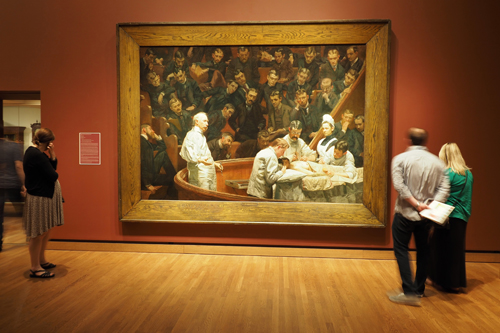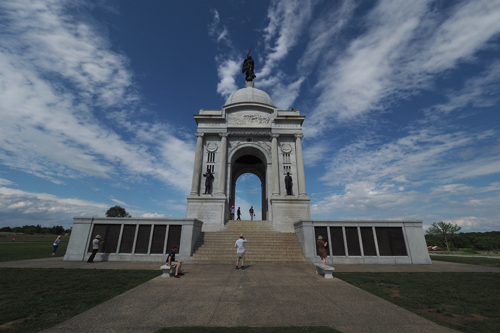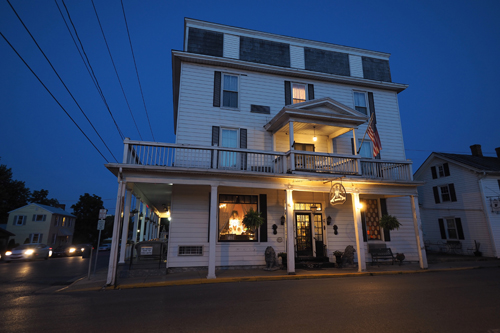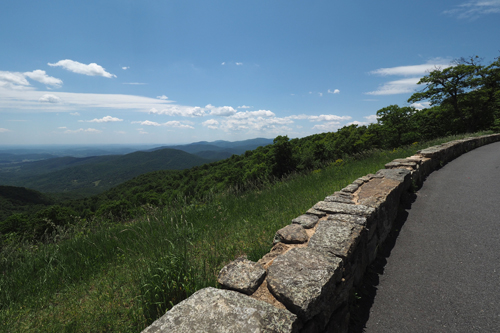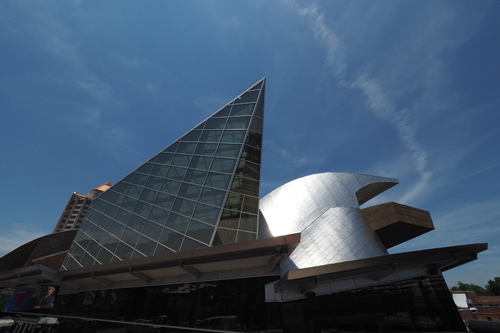May 11-18, 2017. New York City and Tarrytown, New York State.
After a very long flight from Melbourne, via Sydney and Los Angeles, we arrived in the Big Apple.
This was the first leg in another adventure – discovering new places and chasing our family around the world.
We are planning on being away for about ten months and the first part was all about family.
Over two years ago Evan and his wife Stephanie came to NYC. Steph had been offered a place, in the Masters program, at Columbia University.
We were in New York for her graduation and from there we were going to explore some of the eastern states.
Columbia University was first established in 1754 and was formerly known as King’s College. It was established by a royal charter from George II and was renamed as Columbia College in 1784, following the American Revolutionary war.
I wondered why a crown was on the crest of Columbia – the answer was in its history.
We arrived on a Thursday, just in time for Mother’s Day on the Sunday.
Jenny and Neil, Steph’s parents, were also in New York for the graduation and Ev and Steph had planned a Sunday lunch.
Where we were going and how we were to get there was a well kept secret.
A Mother’s Day mystery tour.
After a bus ride and a train trip we ended up in Tarrytown, about 40 kilometres north of Manhattan, on the Hudson River.
It was a wonderful surprise for everyone, especially the mums.
After an excellent lunch we had a stroll up and down Main Street in Tarrytown.
We even visited the local fire department and chatted with one of the local fireman, a huge 17 year old volunteer.
Then it poured down.
There was plenty of shelter, so we managed to get back to the station and New York without getting soaked.
The next few days were taken up with the graduation which is the subject of a separate post.
May 19, 2017. The Hamptons, New York State.
On our final day in NYC we picked up a Hertz rental near the Washington Bridge and made a very slow escape from the city.
The car was a white Nissan Sentra with cavernous boot space, so our bags and packs fitted in easily.
After our slow start we got onto Long Island and the speed increased as we hit the rural areas.
The Hamptons are the ‘escape’ towns for New Yorkers. They are quiet during autumn and winter but turn feral in the summer months.
We had arranged to spend time with our old friends, Cathie and Earl Gandel. They have had a house in Bridgehampton for over 40 years. It’s been both their principal residence and holiday home during that time.
The weather was very hot as we left New York and the Nissan’s air conditioner worked overtime. By the time we reached Bridgehampton it had dropped to a very pleasant 25°C.
The next day the New York weather had reached us and the temperature had risen to 35°C again.
In the morning Earl and Cathie drove us around the Hamptons and we caught a glimpse of some of the vast hedged estates that are home to rich and famous New Yorkers.
We stopped for lunch and had one of the notorious lobster rolls, a local specialty we were told.
Two serves were enough for the four of us.
We were back in the States and the servings were huge.
How quickly you forget.
Earl and Cathie had just sold the Bridgehampton house and were planning to move back to LA.
We spent two nights and a full day with Earl and Cathie.
I met Earl at Dancer Fitzgerald Sample in 1982.
The agency was a partnership between Schofield Sherbon Baker in Sydney and Dancer Fitzgerald Sample (DFS) from New York.
The founding and primary reason for the creation of DFS was the servicing of the Toyota business in Australia.
Commercial vehicles were handled out of the Sydney office and passenger cars from Melbourne.
Earl was sent to Melbourne as General Manager and chief authority on all things Toyota.
Earl still has a love of cars and owns two beautiful vintage British sports cars – a 1949 Triumph and a 1950s’ MG.
Earl is retired but still holds honorary positions with the local fire station and historical society. While Cathie still works as a free-lance journalist.
May 20, 2017. Bridgehampton, New York State to West Haven, Connecticut.
It took three ferry trips to get from Bridgehampton, in New York State, to West Haven in Connecticut.
Two short and one long.
The longer journey was from Orient Point to New London. This is the only one we needed to book in advance.
We broke our trip at Greenpoint, with a good cup of coffee at Aldo’s, followed by a short walk.
It was a pleasant 80 minute boat ride, marred briefly by the beeping of a car alarm coming from a black BMW.
Our ferry was the New London, operated by Cross Sound Ferries.
We stopped in New Haven, the home of Yale University to explore the campus.
A strange feature of the city landscape, especially around the campus, were the ‘Personal emergency stations’. These were freestanding poles, with a blue light mounted on top and down below, an emergency button.
I can only surmise that students on the campus are at risk of muggings or other attacks. The poles were everywhere and placed at 50 metre intervals.
Wandering around the campus we also discovered the Women’s Table, a sculptural piece by the artist Maya Lin.
Maya Lin was a student at Yale and in 1993 designed the piece to celebrate the growing number of female students that have and will attend the university.
There were women at the university right from its very start in 1701. They were what was called ‘silent listeners’ and could only sit in on classes and not participate.
The first female students on record registered in 1837.
The hotel/motel prices in New Haven were over the top. Probably due to graduation season in Yale.
We therefore stayed out of the main centre in West Haven, at a small and rather run down motel.
Our evening meal was at Cask Republic, a brewpub with 43 beers and ciders on tap.
Again we were rewarded with a good meal, at reasonable prices, with excellent local craft beers and wines.
Thea has decided on a new strategy for accommodation. By staying out of the main town or city centres we can save on accommodation costs. That saving can then be spent on using an Uber to travel to where the action is.
So far it has worked well.
May 21, 2017. New Haven, Connecticut to Kingston, New York State.
We headed back into New York State, on our way to Kingston and the Catskills. This was via Scenic Byway 58 into Bethel.
Here we had a cup of coffee at Molten Java – the write-up and reviews were better than the coffee.
The drive into Kingston was again on a Scenic Byway. The countryside was verdant green with spring growth.
Kingston is a strange town as there is no apparent centre or commercial area. In fact there is very little accommodation at all in the town, with most of it being centred near the Hudson Valley Mall.
Luckily this was where we were staying.
Surprisingly I took no snaps this day.
May 22, 2017. Kingston and the Catskills, New York State.
This was a day of country and culture.
Firstly we found a good coffee at Coffee Beanery. The guy was very anxious to find out how we discovered his café. He seemed surprised that we had Googled ‘good coffee close by’ and his name popped up.
We then headed into the Catskills for a drive.
The weather had turned cold and cloudy and rain was constantly threatening.
Part of our country drive took us along Railroad Avenue where we came across an old dilapidated hotel. It was a huge, rambling structure that was literally collapsing in on itself.
On the way to the Vanderbilt Mansion we discovered Kaaterskill Falls. This has been a tourist destination since the 1820s and is one of the highest waterfalls in New York State.
There are two stages to Kaaterskill Falls. The total height is 79m and the longest drop is 55m.
It was quite a hike up to the viewing platform but the views were worth it.
Even if everything was shrouded in mist.
In November 2016 a 30 year old hiker fell to his death. However it was winter and the ground was slippery with ice.
It took us almost two hours for the return trip and as soon as we arrived back at the car park, it started to rain.
We didn’t get to the Vanderbilt Mansion until late in the afternoon and the main building was shut. It was a little disappointing but we had enjoyed a great walk in the morning and you can’t do everything.
To add to it all, the mansion was undergoing major renovations and scaffolding adorned all sides of the Neo Classical construction.
The 54 room Vanderbilt Mansion in Hyde Park was designed by the architectural firm of McKim, Mead and White and built between 1896 and 1899. It all sits on 85 hectares of formal gardens, woodlands and auxiliary buildings.
The estate originally dates back to 1764 when it was then used as agricultural land.
The Vanderbilt family were of Dutch origin and prominent during the ‘Gilded Age’ from about 1870 to 1900. They made their money through shipping and railroads. Two generations of the Vanderbilt’s were the richest family in America from the late 1800’s to the middle of the 20th century.
As with so many families that achieve great wealth, the Vanderbilt’s legacy only lasted three generations. It was described to us as ‘Shirt sleeves to shirt sleeves’ with the first generation building an empire from nothing and the last generation loosing it all.
May 23, 2017. Kingston to Ithaca, New York State.
On the way to Ithaca and the Finger Lakes we stopped at the Ashokan Reservoir. The temperature was still fresh but it promised to warm up in the afternoon.
Construction on the reservoir was started in the early 1900s, with the first drinking water pumped to New York City in 1915.
It was a monumental project that used over 3,000 workers, all of whom were housed near the construction site.
It was ground breaking in that the authority offered food, housing, doctors, recreation and a broad education to the children of the workforce, as well as English classes to the immigrant families.
In the 1880s’ New York’s water supply was being stretched and the new Ashokan Reservoir promised to deliver 600 million gallons (2,271,247 litres) per day into the city.
The project displaced many locals from their farms and homes.
Once completed the system included four reservoirs and over 127 miles (204 kilometres) of aqueducts and tunnels.
The cost then was $177 million, today it would be over $4 Billion.
On the way to Ithaca we had a scare – there was a screeching of alarms in the Nissan.
Initially we thought it was a warning from the car, but nothing seemed to show up.
No lights or any indications.
Then we realised it was coming from our iPhones.
The alarm was from an alert, that had been put out by police, in regards to an abduction.
The offence had taken place hundreds of kilometres from where we were.
We still kept an eye out for the red Ford Pick-up truck.
In Ithaca we were staying out of town again and planned on getting an Uber to go to dinner.
There were no Ubers in Ithaca.
So we were back to the old, dated and extremely ineffective taxi system.
We were told that the taxi would be 20 minutes, it only took 10. We were also told it would cost $12, it only cost $10.
Maybe they are starting to learn.
May 24, 2017. Ithaca and the Finger Lakes, New York State.
We found yet another excellent coffee at Montour House in Montour Falls.
The Montour or Sch-qua-ga Falls are a looming backdrop to this quaint little village – they seem to cascade right into the main street.
From there we drove to Geneva, along Seneca Lake, one of the many long narrow lakes in the Finger Lakes region.
Geneva it at the very top of Seneca lake and boasts a number of beautifully restored buildings from the turn of last century.
My favourite was the Romanesque revival YMCA building (1898) with its beautiful Art Nouveau typography on the facade.
From Geneva, on the shores of Seneca lake we then drove to Seneca Falls which is very close to Cayuga Lake.
The US women’s rights movement started in Seneca Falls in 1848. However it wasn’t until 1920 when women, across the US, actually got the vote.
The Seneca Falls Convention ran over two days, July 19-20 and attracted widespread attention. The convention’s Declaration of Sentiments became the single most important factor in spreading the news of the women’s rights movement around the US.
There is a life sized statue on the Seneca River, not far from the falls that depicts three women. This was the meeting between Elizabeth Cady Stanton and Susan B Anthony, introduced by a mutual friend, Amelia Bloomer.
This chance meeting is said to have been the start of the suffragette movement in the US. This ultimately led to the Nineteenth Amendment to the American Constitution – the right for women to vote.
May 25, 2017. Ithaca, New York State.
Ithaca is the home of Cornell University.
Cornell, like Columbia and Yale, is another Ivy League, private University. It was established in 1865 by Ezra Cornell and Andrew Dickson White.
Its charter was to make contributions in all fields of knowledge. From the classics to the sciences – from theoretical to the applied.
It has always been co-educational and non-sectarian. Ideals that were unconventional for the time.
As of 2017 Cornell claims amongst its 245,000 living alumni to have, 34 Marshall Scholars, 30 Rhodes Scholars, 29 Truman Scholars, 7 Gates Scholars, 56 Nobel Laureates and 14 living billionaires.
The currents students also like to drink.
We were in Ithaca just before the Commencements, or Graduation Ceremonies (This depends on whether your are starting or ending your academic year) and there were a lot of very ‘merry’ graduates.
They were harmless and who could blame them for letting off a bit of ‘academic or practical ‘ steam.
Ithaca, named after the Greek island, was founded in 1740 and incorporated in 1888.
Due to its large student population the voters are more liberal than upstate New York.
Ithaca hasn’t always been liberal leading. In the late 1800s, it was home to the Ithaca Gun Company, manufactures of high quality shot guns.
The company became the icon of the hunting and shooting world. The famous trick-shooter, Annie Oakley favoured, and promoted, Ithaca guns.
On our last day in Ithaca the weather turned foul so we visited the Johnston Museum of Art at Cornell University.
There was an interesting poster exhibition, immediately we entered the museum.
During WWI, posters went from artistically advertising products, to aggressively promoting propaganda for the war effort.
The exhibition was all about that transformation.
This was followed by an interesting retrospective of printmaking with artists such as Albrecht Dürer, William Hogarth, Claude Lorrain, Giovanni Batista Tiepolo, Antonio Canaletto and Rembrandt Harmensz van Rijn.
Installations and diverse collections were also in the museum.
Thea even donated her old red iPhone case to an exhibition of Abandoned Red Objects.
It’s all about the art.
There was even an Andy Warhol Campbell’s Soup collection from 1969.
The entire collection was very eclectic, in that there were a small number exhibits from many periods.
This is probably due to the fact that almost everything was from a bequest or donated.
In the afternoon the weather hadn’t got much better so we went in search of a mall to replace Thea’s iPhone cover.
We then had a short drive and a quick walk to Ithaca Falls, which is almost in the centre of town.
This is the site of the infamous Ithaca Gun Company.
Much of the area has been fenced off, as it was polluted with lead from the factory.
Rehabilitation is still taking place.
May 26, 2017. Ithaca, New York State to Milford, Pennsylvania.
We drove out of Ithaca and eventually got onto the NY 97, a scenic drive that took us down the Delaware River.
This is the border between New York State and Pennsylvania.
Near the junction of the Delaware and Lackawaxen Rivers we found the John A Roebling’s Delaware Aqueduct that was built in 1847-1848 and opened in 1849. It is also known as the Roebling Bridge and was originally designed as an aqueduct that connected two parts of the Delaware and Hudson canal.
It has now been converted to carry vehicles and pedestrians.
We also found a public toilet, which is rather rare in the US.
The construction of the canal and the subsequent building of the Erie Railroad in 1848 help development in the Upper Delaware region.
Late in the afternoon we made our way to Grey Towers, a stately mansion on the outskirts of Milford.
Grey Towers was designed by Richard Morris Hunt and built by the philanthropist and businessman James Pinchot in 1886.
The Pinchot family originally came from France and the mansion reflected their French heritage.
James Pinchot was deeply disturbed by the deforestation, caused by over logging in the US, and convinced his eldest son, Gifford Pinchot to consider a career in forestry.
After studying abroad, because no forestry schools existed in the US, Gifford went on to become the first Chief Forester. This was in the the newly created United States Forest Service, formed by President Theodore Roosevelt.
During his tenure, national forests more than tripled in size to over 170 million acres.
Gifford went on to serve two terms as Governor of Pennsylvania.
In 1963 Gifford Bryce Pinchot, son of Gifford, donated the property to the United States Department of Agriculture, Forest Service.
On September 24, 1963, President John F Kennedy dedicated the site to the American public in the hope of further promoting the ideals of conservation.
There is a monument to the Forest Service in the forecourt of Grey Towers.
May 27, 2017. Milford to Philadelphia, Pennsylvania.
Our morning started with breakfast at the Village Diner, which was next to our motel.
Bad move.
It’s only saving grace was that their menu had been designed in the Googie style (1950s’ space age design genre)
The service was lazy and the food was poor.
Dissatisfied we headed to Philadelphia, via Valley Forge.
This was an interesting side trip as Valley Forge is regarded as one of the seminal locations in US history.
Valley Forge was the site of General Washington’s headquarters during the winter encampment of 1777-78. This was the third year of what was the eight year War of Independence.
No battles were ever fought at Valley Forge.
The area became famous as the place where, though extreme hardship, the Continental Army survived a brutal winter and went on to eventually triumph over the British.
This is seen as the defining moment in the US – the time when the American spirit was established.
It’s a bit like our ANZAC Day.
Late in the afternoon we discovered the King of Prussia Mall. This has the dubious honour of being the largest, by rentable space, mall in the US.
To their credit they have a Bluestone Lane coffee shop. This is a part of an Australian chain, that now has 7 outlets in the eastern US.
They serve great coffee and much to Thea’s delight, Lamingtons.
That night we stayed in the university district of Philadelphia and discovered the White Dog Restaurant for dinner.
This proudly boasts being the first Philadelphia establishment to source all their ingredients locally.
True or not, their food was fantastic.
The restaurant’s design followed the ‘canine’ theme with dog busts on the walls. As well, cushions and art were all incorporated into the decor.
May 28, 2017. Philadelphia, Pennsylvania.
We were in Philadelphia for the Memorial Day holiday weekend.
This is the day that Americans remember those who died serving in the American Armed Forces.
It is held on the last Monday in May.
It was about 5 km into the old part of Philadelphia, so we decided to walk, having been stuck in the car for the last few days.
Stupidly we stood in line to see the famous Liberty Bell, only to discover that our view was through a window.
Once we found the real queue it took 45 minutes to get inside.
Well the Liberty Bell is one of the patriotic touchstones in the US and this was the Memorial Day long weekend.
The Liberty Bell was commissioned in 1752 by the Pennsylvania Provincial Assembly and was originally placed in the Pennsylvania State House.
While it is closely associated with the Declaration of Independence, there is no account of it actually being rung on July 4, 1776. However most historians agree that it probably was one of the bells rung on July 8, to mark the reading of the declaration.
The bell fell into obscurity until the 1830s’ when it was adopted as a symbol by the abolitionist societies who called it the ‘Liberty Bell.’
The bell has been recast twice, due to cracking and there is a large crack in the one on display. Since being retired it has made many road trips across the US.
We then continued on a few more kilometres down to Penn’s Landing on the Delaware River.
There is a big Irish influence in Philadelphia. This is mainly due to the influx of Irish immigrants following the potato famine of 1847.
There is a large memorial to the Irish near Penn’s Landing and many Irish pubs and bars in the city area.
We discovered The Plough and the Stars, a lively pub that was bursting at the seams with weekend revellers.
We managed to get an outside table. I think the locals knew something that we didn’t, as it wasn’t long before the rain came.
May 29, 2017. Philadelphia, Pennsylvania.
The rain held off and we again walked. This time to the Philadelphia Museum of Art, which was just over the Schuylkill River from where we were staying.
The steps leading up to the Museum were made famous in the Rocky movies, staring Sylvester Stallone. There is even a ‘Rocky’ statue out the front, and tourists line up to have their photo taken with him.
We spent three hours in the gallery, mainly concentrating on the America art that spanned the 18th, 19th and 20th centuries.
The exhibit that caught my attention was Marcel Duchamp’s ‘Fountain’.
One hundred years ago this piece turned the art world upside down with its uniqueness and sheer audacity.
Duchamp created the concept of ‘readymades’ by taking mass produced items, and presenting them as art.
The ‘Fountain’ was a urinal that he purchased from the New York showroom of J. L. Mott Iron Works. He then signed it ‘R. Mutt’ and submitted it to an exhibition of the Society of Independent Artists.
It was rejected.
Today the debate still continues as to whether it is object or art.
After our cultural experience in the gallery we went in search of more basic needs.
A good glass of wine and a local craft beer.
The 2nd Story Brewing Company, on Chestnut Street, fitted the bill.
Just next door is the Han Dynasty, a Chinese restaurant with a difference.
Despite the food descriptions being foreign to us the meal was great.
Fresh ingredients, manageable portions and full of flavour.
It was in an old bank and the lofty ceilings and timber features made it all the more impressive.
There was even a row of large clocks with world times displayed.
Unfortunately they didn’t work.
May 30, 2017. Philadelphia to Gettysburg, Pennsylvania.
The morning we left Philadelphia was overcast and drizzling.
It didn’t improve.
It wasn’t so bad as we planned to spend the day driving in search of covered bridges and the Amish folk. There are a number of covered bridges around Lancaster and we had been to the Tourist Information centre to get a map.
We did stop in Lancaster for a coffee and visited the market. Built in 1730, it’s one of the oldest covered markets in the US.
There were once as many as 12,000 covered bridges in the US, today there are fewer than 1,500.
There is a romanticism associated with these quaint old structures, but they are entirely practical.
Their timber truss design allowed for a greater span and they were covered to give them greater longevity.
We drove around the area for about 20 miles (32 Km) and visited four of the bridges, each one was different.
Being in Amish Country we wanted to see if we could spot these traditional Christians. They have been made famous by their simple living, plain dress and a reluctance to adopt modern ways.
The Amish began with a schism in Switzerland between a group Swiss and Alsatian Anabaptists, led by Jakob Andaman in 1693. Many in this group emigrated to Pennsylvania in the early 18th century.
We did see many in farm yards and in their traditional horse drawn buggies. But what was surprising was a lot were also driving their John Deere tractors.
Obviously not all the Amish have rejected technology.
Historically we were travelling in the right direction.
Philadelphia and the surrounding areas, especially Valley Forge were the site of Washington’s winter encampment of 1777-78. These were the touchstones of the American’s strive for independence.
Now we were in Gettysburg, founded by Samuel Getty in 1761.
This is where the Civil War was won.
This war wasn’t about sovereignty but more about states’ rights and slavery.
Fought between 1861 and 1865 it was an idealogical battle between the north and the south.
In 1862 seven southern ’slave’ states individually declared secession from the US to form the Confederate States of America.
The Battle of Gettysburg was fought between July 1 and 3, 1863. The battle involved the largest number of casualties in the civil war and was the turning point. After three days of battle in Gettysburg, Robert E Lee’s army, of North Virginia, were defeated in their attempts to invade the north.
This changed the course of history.
Speaking to the locals, they say that if the north had lost then America would never have become ’The United States’ and world history would have been very different.
Given the current politics within the US, I wonder if that would have been such a bad thing.
Our accommodation in Gettysburg was right in the heart of town, at the Inn at Lincoln Square.
This was an historic house, originally built by Joel Buchanan Danner (1804-1885) in 1824. Joel B Danner was born in Liberty Maryland and was a Democratic member of the US House of Representatives between 1850 and 1851. He was probably comfortably retired from politics and running his hardware business when the Civil War broke out in his front yard in 1863.
Apart from a few modifications, the room we stayed in had an authentic 19th century feel.
There’d were even steps to get up into the four poster bed.
May 31, 2017. Gettysburg, Pennsylvania.
The day was spent on the battlefields of Gettysburg.
It was suggested that we hire a guide for a few hours to escort us around the site. The guides were all booked out, so we purchased a CD pack and escorted ourselves.
The itinerary was intended to run for two and a half hours.
We took much longer than that – about five and a half hours.
We had a rough beginning, as we couldn’t find the start of the tour. After that it all went extremely well.
The guided tour was a mix of facts, yarns and dramatisations.
There are over 1,400 monuments dotted around the battlefield area, making it the largest open air gallery in the US.
That’s if you regard monuments as art.
One was of an indian chief, erected for the Tammany Regiment Memorial. The monument is a bronze statue of the Delaware Indian Chief Tammany standing in front of a teepee. Tammany was a friend to colonists in the early days of America and became the symbol for the powerful New York City political hall that raised the regiment.
It sits rather incongruously with the images of white men in uniform.
There were three CDs in the set, one for each day of that battle that was fought from July 1 to 3 in 1863.
Our final stop was at the Soldiers’ National Cemetery. This is set within the Gettysburg battlefield and was consecrated on November 19, 1863.
This is the place where Abraham Lincoln delivered the historic and eloquent ‘Gettysburg Address’
This must go down as one of the most monumental speeches in history.
Surprisingly it is only 272 words long, yet it expressed so much.
June 1, 2017. Gettysburg to Uniontown, Pennsylvania.
Mowing the lawn takes on a whole new meaning, once you escape the big cities.
Wherever we went, men and occasionally woman, sat astride their ride-on-mowers and ‘cultivated’ their lawns. This seems to be a national pastime at this time of the year. It’s needed, as there are so many blocks of land, about the size of a small European country, that need constant maintenance, especially in spring.
Our primary adventure for the day was a visit to Frank Lloyd Wright’s Fallingwater.
This is regarded by many as the finest piece of domestic architecture in America.
The irony is that he achieved this greatness by ignoring the brief.
Designed and built between 1935 and 1939 for the Kaufmann family of Pittsburgh, Pennsylvania, the house is cantilevered over a 30’ (9.1 metres) waterfall.
The Kaufmann’s owned a large estate at Bear Run and wanted the house to overlook the waterfall.
Wright decided to build the house over the falls instead.
It was part of Wright’s new architectural philosophy of incorporating the surroundings into the design. The stone used to construct the house came from a local quarry, also owned by the Kaufmanns.
Frank Lloyd Wright designed about 1,000 houses in his lifetime, 500 of those were created after Fallingwater, when he was in his 70s.
This is regarded as his best.
Fallingwater is so popular, that at the height of the season, 1,000 visitors file through the house every day.
On the day we were there it processed about 800 tourists.
You can only take pictures outside, as they believe it will hold up the tours if photos are taken inside.
If you want to photograph the interior, you can book one of the Photo Tours, but these only run in the early morning and are booked out weeks in advance.
I did try a grab a few snaps through the windows.
As with most of his designs, Wright also created the furniture, lighting and interior decor. So it’s a pity I couldn’t have captured a few more images.
Fallingwater was designed to be the Kaufmann’s summer house, so cooling was important. Wright, without using a traditional air conditioning system, utilised windows and the draft from the waterfall below to allow cool air to flow through the house.
June 2, 2017. Uniontown, Pennsylvania to Strasburg, Virginia.
Heading south we crossed the Mason-Dixon line again. This is a line that was surveyed by Charles Mason and Jeremiah Dixon, between 1763 and 1767.
The line ultimately became a symbolic and cultural division between the North and the South, especially in regards to slavery.
It is 250 years since Mason and Dixon were commissioned to survey the 4,000 square miles (10,360 square kilometres) of disputed territory.
The survey was a result of a disagreement between Maryland, Pennsylvania and Delaware in Colonial America.
The two British surveyors used the most advanced equipment that was available in the day. The accuracy was so extraordinary, that even today it astounds the scientific world.
The countryside was green and heavily wooded. We went off the main road and had a great drive through the countryside on very narrow, winding roads.
Sergeant Peppers Lonely Hearts Club Band by the Beatles was released on May 26, 1967 in the United Kingdom and June 2, 1967 in the United States.
We were in the US on the 50th anniversary, so dutifully played the album as we were driving through Virginia.
It’s a classic.
We arrived in Strasburg, Virginia in the afternoon and decided to drive around town to see what was happening.
The drive was very short.
Strasburg, founded in 1761, is on the Shenandoah River and is know for pottery, antiques and Civil War history.
However most people would remember the name from the American folk song, ‘Oh Shenandoah’ This was recorded by many artists, including Bob Dylan, Glen Campbell and even Judy Garland.
For a change we were staying in an old colonial pub, the Hotel Strasburg. This was very different to our usual motel/hotel style accommodation.
The building was constructed in 1902, as a private hospital, but then became a lodging house.
It was restored in 1977 to its current state.
Antiques were everywhere and our computers and digital cameras seemed very out of place. Apparently the Hotel Strasburg used to be owned by one of the large antique dealers in the town and everything in the place was available to purchase.
June 3, 2017. Strasburg to Roanoke, Virginia.
Antiques are still big business in the US, well at least in Pennsylvania and Virginia.
The vast majority of domestic architecture in the eastern US hasn’t changed in the last 100 to 150 years. Modern houses are very hard to find and even the decor in the motels and hotel we have stayed in seem to hark back to an older era.
That combined with the fact that the American War of Independence and the Civil War all loom large in the culture of these towns.
We found a great coffee shop in Front Royal, which is only about a twenty minute drive away from Strasburg.
There we met Bruce.
He lived in Front Royal and loved a chat. He was retired but had been a salesman, worked on the railroads and even in the funeral business.
There was music coming from the town square and Bruce told us that there was a Baptist revival meeting going on.
According to Bruce, another regular Font Royal activity happens on Wednesdays. This is when the Democrats and Republicans face off in the square, yelling and waving placards at each other.
The main part of the day was to be spent driving along the Skyline, a ridge road in the Shenandoah National Park, within the Blue Ridge Mountains
Bruce told us it was well worth it even if it was a little slow.
He wasn’t wrong.
The drive is 105 miles (169km) long with 75 overlooks on both sides of the road. However you are restricted to 35mph (55kph), which makes the trip very long indeed.
We drove from near Front Royal in the north to Waynesboro in the south.
It certainly was a great drive, regarded by many as one of the best mountain roads in the US.
Apart from the day trippers on the road, there were many on bikes and an unknown number walking in the forests.
Every car park, leading to one of the many walking tracks, was full.
On the recommendation of the hotel receptionist we went to Billy’s for dinner. This was in the market area of Roanoke and about a twenty minute walk from the hotel.
From the outside Billy’s looked rather small and very crowned but when we got inside it was much larger than it appeared.
It was a beautiful balmy evening so we opted to eat outside.
The food was great and a change from burgers, sandwiches and over sauced pastas.
Uber is operating in Roanoke, so we booked one to bring us back to the hotel.
That’s when we met Perry, ‘The best Uber driver in the world’. They were Perry’s words not mine.
Apart from his huge ego, Perry did have some interesting innovations. One was a small blue illuminated Uber sign on the top of his car.
It did help us to find him. There was the 59th Annual Sidewalk Art Show in the streets around the market area and Perry was forced to park at the end of the streets, as the road in front of the restaurant was blocked off.
We saw Perry again the next day. His other job was in a hot dog stand.
I wonder if he made the best hot dogs in the world?
June 4, 2017. Roanoke, Virginia.
In 1852 the town was known ‘Big Lick’, after a large outcrop of salt that drew wildlife to the site near the Roanoke River.
This name wasn’t well regarded by the locals, so in 1882 it was renamed to Roanoke and became an independent city in 1884.
One of the main attractions in Roanoke is the Taubman Museum of Art. This was designed by Randall Stout, a southern architect originally from Tennessee, and built in 2008.
For seven years Stout worked with Frank Gehry and this is very evident in his design.
The Museum is rather boxed in, with the railway line on one side and a bridge on the other.
This is ironic, considering that there is so much space in this city, most of it taken up by vast carparks
Fortunately the interior was much more spacious.
The collections in the Taubman place an emphasis on South Eastern US art. There was a small, rather diverse offering that ranged from 18th century colonial works to contemporary painting and arts and crafts.
One that I particularly liked was an installation of images projected onto four boxes filled with different foods. Entitled I am not in the business, I am the business it was created by Eva Rocha.
It was surprising how dramatically the images were altered by the background material.
There was also a collection of highly decorative handbags entitled, Earthly Delights by Judith Lieber.
She was born in Hungary in 1921 and after the war, in 1946, married an American GI, Gerson (Gus) Lieber, then moved to the US.
She obtained a traineeship at a handbag company and eventually became the first woman to join the Hungarian Handbag Guild.
In 1963 she founded her own company and became famous for her unique designs that featured animals, fruit, birds and snakes.
Her bags have been carried on the red carpet by the rich and famous, as well as a number of US First Ladies.
Another collection was some beautifully intricate metal work entitled, Metal Delicious by Alison Pack.
It was suggested that we go to the museum inside the visitor’s centre, however it was closed.
There was a small exhibition on Raymond Loewy in the foyer, so we had a wander around there instead.
Raymond Loewy (1893-1986) was a French born American industrial/graphic designer. He designed everything from famous corporate logos like Shell, Exxon and TWA, to Greyhound buses, Studebaker cars and the first Streamliner locomotive for the Missouri Pacific Railroad.
He is regarded by many as the Father of Industrial Design in the US.
Later in the afternoon we walked down to the Virginia Museum of Transportation. This concentrates on cars and trains, with the odd motorcycle and bus thrown in for variety.
A very interesting exhibit, in the train section, was an old mail sorting carriage. Most mail in the US moved on railroads, in Railway Post Offices cars, until the 1960s.
The term ZIP Code means Zone Improvement Plan and was used from 1963.
Who killed the electric car?
This was a question asked on the exhibit sheet from a 1996 General Motors EV1 Electric Car.
The vehicles were produced between 1996 to 1999 and only ever leased, not sold outright.
They were limited to Los Angeles, Phoenix and Tucson but were popular enough to expand to San Francisco and Sacramento.
Then, in 2002 the program was discontinued. The majority of the cars were recalled and crushed. The remainder were given to museums with their power trains deactivated.
One has to ask why?
We then wandered back into downtown Roanoke for dinner.
Then it started to pour down, but it did clear long enough for us to walk back to our hotel.
No Uber that night.
